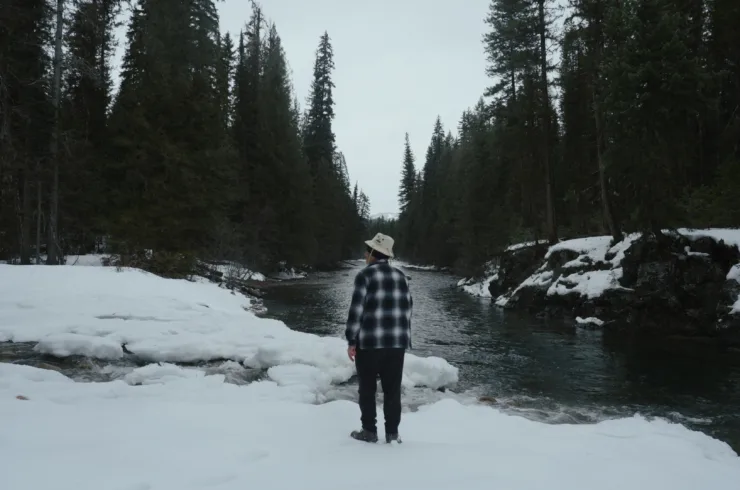Valuing world class wilderness, creating long-term balance.
Some of the best-known and most-cherished National and Provincial Parks are set in the Rocky Mountains of British Columbia, Alberta and Montana.
In the midst of international acclaim for these spectacular Parks, however, the area between them has been overlooked by all but a few. Known as the Southern Canadian Rockies, this rugged, beautiful landscape is a stronghold for vulnerable species — grizzly bears and wolverines, mountain goats and bighorn sheep, and native bull trout and west-slope cutthroat trout. However, expanding mining, forestry and other human developments threaten to fracture the landscape — with few safe havens for security or safe passages for shifting in the face of changing climate.
Our challenge now is to match the spectacular beauty and treasures of the Southern Canadian Rockies with appropriate stewardship. We are working hard to chart a new direction.

Creating Balance in the Elk Valley
Currently the Elk Valley, part of the Southern Rockies region, is home to five massive open pit coal mines. These mines produce approximately 25 million tons of processed coal which is primarily used in the production of steel worldwide. The five mines are located to the east of the Elk River, in the upper reaches of the Elk Valley centred around Sparwood and Elkford.
The land use plan for this region currently states that mining has the highest priority over any other considerations on the land, including protection of riparian areas, old growth forests, wildlife connectivity and recreation opportunities. The provincial government’s two zone mining policy was intended to create ‘certainty’ for business and ensure that all areas not currently part of a park or protected area are open for energy and mining exploration and extraction.
This unbalanced land use policy has resulted in many new mountaintop removal and underground coal mines being proposed across the landscape. Recent scientific studies have clearly shown that current mining activities are having detrimental effects on the Elk River, Kootenay River and Lake Koocanusa, including levels of the selenium at toxic levels in our waters and fish.
Wildsight would like to see a comprehensive long term plan that reconciles the world class wildlife and wilderness values with the metallurgical coal resources. The plan should protect human health, international fisheries and water quality values, and wildlife connectivity at the Yellowstone to Yukon scale. This plan should be based on a comprehensive baseline assessment that evaluates cumulative effects, water assessments, and project specific impact studies.
Wildsight is also proposing that the the west side of the Elk River valley be designated a Wildlife Management Area with a focus on protecting wildlife and fishery values.
The Flathead Valley
Within the Southern Rockies region lies the Flathead Valley—one of the most biologically important places on earth. This valley is home to a free flowing, transboundary river with exceptional water quality, and is unmatched in North America for the variety, completeness and density of carnivore species like grizzly bears that live and breed there. A key connection for animals moving north and south through the Rocky Mountains, the Flathead Valley is a magical place of great wildness that has never been settled by humans.
Wildsight and its partners are working hard to defend this special place and promote Rocky Mountain wildlife connectivity. We must ensure that the international wildlife corridor remains functional, connecting Waterton-Glacier to the Canadian Rocky Mountain Parks along the spine of the Rockies and protecting the wildlife and ecosystems of the Flathead Valley, in keeping with recommendations made in the UNESCO 2010 World Heritage Committee report.






